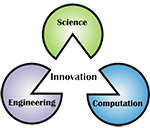Given by: Dr. Harald Schneider
Head, Semiconductor Spectroscopy Division Institute of Ion-Beam Physics and Materials Research Forschungszentrum Dresden Rossendorf, Dresden, Germany
Abstract:
Semiconductor quantum- and nanostructures are becoming increasingly important for various device applications. On the one hand, quantum effects are imposing natural limits on scalability in silicon nanoelectronics, which will ultimately change "Moore's law" and related paradigms. On the other hand, tunneling and quantum confinement have formed the basis for a variety of new semiconductor heterostructure devices, starting with the resonant tunneling diode (RTD) and the quantum well laser in the seventies. Later on, the quantum well infrared photo detector (QWIP) and the quantum cascade laser (QCL) were introduced, where optical transitions between sub bands in a quantum well lead to novel opportunities in infrared optoelectronics, thermal imaging, and environmental sensing. Besides the two-dimensional electron states in quantum wells where quantum confinement only exists in one direction, systems with lower dimensionality, i.e., quantum wires (QWR) and quantum dots (QD), hold the potential for improved performance and novel functionality.
After some basic introduction into semiconductor quantum structures, this course will focus on device concepts and applications related to tunneling and artificial electronic sublevels. Special emphasis will be given to infrared optoelectronics; to this end, QWIP and QCL will be covered in more detail. The potential of QD for improved device performance and future applications in quantum cryptography and metrology will also be addressed.

